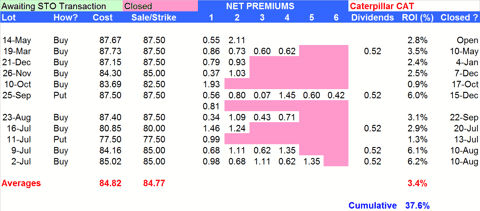 Confusion Reigns.
Confusion Reigns.
January is supposed to be a very straightforward month. Everyone knows how it’s all supposed to go.
The market moves higher and the rest of the year simply follows. Some even believe it’s as simple as the first five trading days of the year setting the tone for the remainder still to come.
Since the market loves certainty, the antithesis of confusion, the idea of a few days or even a month ordaining the outcome of an entire year is the kind of certainty that has broad appeal.
But with the fifth trading day having come to its end on January 8th, the S&P 500 had gone down 11 points. Now what? Where do we turn for certainty?
To our institutions, of course, especially our central banking system which has steadfastly guided us through the challenges of the past 6 years. The year started with some certainty as Federal Reserve Chairman nominee Janet Yellen was approved by a vote that saw fewer negative votes cast than when her predecessor Ben Bernanke last stood for Senate approval, although there were far fewer total votes, too. On a positive note, while there was voting confusion among political lines, there was only certainty among gender lines.
While Dr. Yellen’s confirmation was a sign to many that a relatively dovish voice would predominate the FOMC, even as some more hawkish governors become voting members this year, the announcement that Dr. Stanley Fischer was being nominated as Vice-Chair sends a somewhat different message and may embolden the more hawkish elements of the committee.
That seems confusing. Why would you want to do that? But then again, why would you have pulled the welcome mat out from under Ben Bernanke?
Then on Friday morning came the first Employment Situation Report of the new year and no one was remotely close in their guesses. Nobody was so pessimistic as to believe that the fewest new jobs created in 14 months would be the result.
But the real confusion was whether that was good news or bad news. Did we want disappointing employment statistics? How would the “new” Federal Reserve react? Would they step way from the taper or embrace it as hawks exert their philosophical position?
More importantly, how is a January Rally supposed to take root in the remaining 14 trading days in this kind of muddled environment?
Personally, I like the way the year has begun, there’s not too much confusion about that being the case, despite my first week having been mediocre. While the evidence is scant that the first five days has great predictive value, there is evidence to suggest that there is no great predictive value for the remainder of the year if January ends the month lower. I like that because my preference is alternating periods of certainty and confusion, as long as the net result remains near the baseline. That is a perfect scenario for a covered option strategy and also tends to increase premiums as volatility is enhanced.
I prefer to think of it as counter-intuitive rather than confusing.
As usual, the week’s potential stock selections are classified as being in Traditional, Double Dip Dividend, Momentum and “PEE” categories this week (see details).
There’s not much confusion when it comes to designating the best in large retail of late. Most everyone agrees that Macys (M) has been the best among a sorry bunch, yet even the best of breed needed to announce large layoffs in order to get a share price boost after being range bound. However, this week the embattled retail sector seems very inviting despite earnings disappointments and the specter of lower employment statistics and spending power.
Finding disappointments among retailers isn’t terribly difficult, as even Bed Bath and Beyond (BBBY), which could essentially do nothing wrong in 2013 more than made up for that by reporting its earnings report. While earnings themselves were improved, it was the reduced guidance that seems to have sent the buyers fleeing. There was no confusion regarding how to respond to the disappointment, yet its plummet brings it back toward levels where it can once again be considered as a source of option premium income, in addition to some opportunity for share appreciation.
L Brands (LB) shares are now down approximately 12% in the past 6 weeks. It is one of those stocks that I’ve owned, but have been waiting far too long to re-own while waiting for its price to return to reasonable levels. Like Bed Bath and Beyond it offered lower guidance for the coming quarter after heavy promotions that are likely to reduce margins.
Target (TGT) has had enough bad news to last it for the rest of the year. While it recently reported that it sales had been better than expected prior to the computer card data hack, it also acknowledged that there was a tangible decline in shopping activity in its aftermath. Its divulging that as many as 70 million accounts may have been compromised, it seemed to throw all bad news into the mix, as often incoming CEOs do with write-downs, so as to make the following quarter look good in comparison. For its part, Target, recovered nicely on Friday from its initial price decline and has been defending the $62.50 line that I believe will be a staging point higher.
Sears Holdings (SHLD) on the other hand doesn’t even pretend to be a ret
ailer. The promise of great riches in its real estate holdings is falling on deaf ears and its biggest proponent and share holder, Eddie Lampert, has seen his personal stake reduced amid hedge fund redemptions. Shares plummeted after reporting disappointing holiday sales. What’s confusing about Sears Holding is how there is even room for disappointment and how the Sears retail business continues, as it has recently been referred to as a “national tragedy.”
But I have a soft spot in my heart for companies that suffer large event driven price drops. Not that I believe there is sustainable life after such events, but rather that there are opportunities to profit from other people like me who smell an opportunity and add support to the share price. However, my time frame is short and I don’t necessarily expect investor largesse to continue.
I did sell puts on Sears Holding on Friday, but would not have done so if the event and subsequent share plunge had been earlier in the option cycle. Sears Holdings, only offers monthly options and in this case there is just one week left in that cycle. If faced with the possibility of assignment I would hope to be able to roll the puts options forward, but do have some concerns about a month long exposure, despite what would likely be an attractive premium.
While there’s no confusion about the nature of its products, Lorillard’s (LO) recent share decline, while not offering certainty of its end, does offer a more reasonable entry point for a company that offers attractive option premiums even when its very healthy dividend is coming due. Like Sears Holdings, Lorillard only offers monthly option contracts, but in this case I have no reservations about holding shares for a longer time period if not assigned.
Conoco Phillips (COP) has been eclipsed in my investing attention by the enormous success of its spin-off Phillips 66 (PSX), but had never fallen off my radar screen. While waiting for evidence that the same will occur to Phillips 66 through its own subsequent spin-off of Phillips 66 Partners (PSXP), my focus has returned to the proud parent, whose shares appear to be ready for some recovery. However, with a dividend likely during the February 2014 option cycle, I don’t mind the idea of shares continuing to run in place and generate option income in a serial manner.
Perhaps not all retailers are in the same abysmal category. Lowes (LOW), while not selling much in the way of fashions or accessories and perennially being considered an also ran to Home Depot, goes ex-dividend this week and has traded reliably at its current level, making it a continuing target for a covered option strategy. I’ve owned in 5 times in 2013, usually for a week or two, and wonder why I hadn’t owned it more often. Following its strong close to end the week I would like to see a little giveback before making a purchase. Additionally, since the ex-dividend date is on a Friday, I’m more likely to consider selling an option expiring the following week or even February, so as to have a greater chance of avoiding early assignment of having sold an in the money option.
Whole Foods (WFM) also goes ex-dividend this week, but its paltry dividend alone is a poor reason to consider share ownership. However, its inexplicable price drop after having already suffered an earnings related drop makes it especially worthy of consideration. While I already own more expensively priced shares and often use lesser priced additional lots in a sacrificial manner to garner option premiums to offset paper losses, I’m inclined to shift the emphasis on share gain over premium at this price level. Reportedly Whole Foods sales suffered during the nation wide cold snap and that may be something to keep in mind at the next earnings report when guidance for the next quarter is offered.
Although earnings season will be in focus this week, especially with big money center banks all reporting, I have no earnings selections this week. Instead, I’m thinking of adding shares of Alcoa (AA) which had fared very nicely after being dis-invited from membership in the DJIA and not so well after leading off earnings season on Thursday.
While I typically am niot overly interested in longer term oiutlooks, CEO Klaus Kleinfeld’s suggestion that demand is expected to increase strongly in 2014 could help to raise Alcoa’s margins. Even a small increase would be large on a percentage basis and could easily be the fuel for shares to continue their post DJIA-explusion climb.
Finally, I was a bit confused as Verizon’s (VZ) shares took off mid-day last week and took it beyond the range that I thought my shares wouldn’t be assigned early in order to capture the dividend. In the absence of news the same didn’t occur with shares of AT&T which was also going ex-dividend the next day and other cell carriers saw their shares drop. In hindsight, the drop in shares the next day, well beyond the impact of dividends, was just as confusing. Where there is certainty, however, is that shares are now more reasonably priced and despite their recent two day gyrations trade with low volatility compared to the market, making them a good place to park money for the defensive portion of a portfolio.
Traditional Stocks: Bed Bath and Beyond, Conoco Phillips, L Brands, Lorillard, Target, Verizon
Momentum Stocks: Alcoa, Sears Holdings
Double Dip Dividend: Lowes (ex-div 1/17), Whole Foods (ex-div 1/14)
Premiums Enhanced by Earnings: none
Remember, these are just guidelines for the coming week. The above selections may become actionable, most often coupling a share purchase with call option sales or the sale of covered put contracts, in adjustment to and consideration of market movements. The overriding objective is to create a healthy income stream for the week with reduction of trading risk.





 It only seems fitting that one of the final big stories of the week that saw the Dow Jones eclipse its nearly 6 year old record high would be the latest reports of how individual banks performed on the
It only seems fitting that one of the final big stories of the week that saw the Dow Jones eclipse its nearly 6 year old record high would be the latest reports of how individual banks performed on the